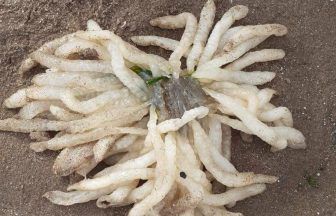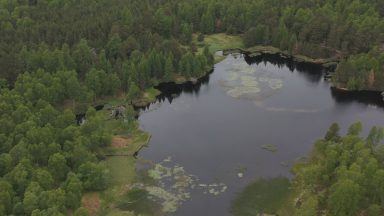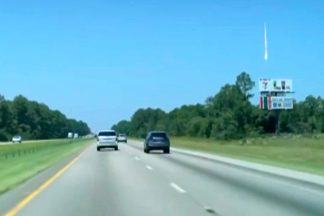By Craig Miller
A Pictish stone dug up by roadworkers in Perth is bringing new insights into Scotland’s warrior past.
The Tulloch Stone, which shows a man holding a distinctive spear, may have been located in a cemetery for the elite.
The near two metre high monolith was unearthed during the construction of the city’s new link road near St Johnstone FC’s McDiarmid Park.
Archaeologists from Aberdeen University, which is leading a study of Northern Picts, say it offers new insights into Scotland’s warrior past.
In an academic paper the research team argues that similarities observed between the Tulloch Stone, named after where it was discovered, and those found at Rhynie in Aberdeenshire and Newton of Collessie in Fife are ‘filling the gaps’ of Scotland’s undocumented history.
Head of Archaeology at the university, Professor Gordon Noble said: “By looking at the three stones together, we have been able to draw new conclusions about what these figures represent.
“On the Tulloch Stone we can now see that the man is carrying a distinctive door-knob butted spear which we know from previous research was in use from the third to the sixth century.
“He also has a very distinctive hairstyle, is wearing a helmet and necklace and has a faint line around the left ankle which could suggest footwear or tight leggings.
“In line with the other stones, this is clearly a depiction of a warrior. Its find spot overlooks the coming together of the rivers Tay and Almond, a junction marked by a Roman fort and later a possible Pictish royal centre, suggesting the monolith might have been located in a cemetery of the elite.
“Because the presentation of the figures is standardised across all of the stones, it is likely that it represents a generic sacred image, rather than it being a depiction of someone buried there.”
Professor Noble and Dr Mark Hall, archaeological curator at Perth Museum, say that the stone is a significant find.
Dr Hall says the discovery points to a war lord or warrior ethos which has been well documented in Anglo Saxon England but for which little evidence has previously been seen in Scotland.
“In Anglo-Saxon England we have lots of examples of burials with weaponry and the poem Beowulf epitomizes the warrior ethos of this period,” he added.
“This has not been evidenced in Scotland in the same way but here through the new Tulloch find and a reconsideration of long-known stones we can see that warrior ideology cast in stone – meaning these martial values were conveyed in a very public way to be visible in the landscape and to invoke supernatural protection.”
Professor Noble said – “This bridges a crucial gap in knowledge as although we know that warrior ideology is important for rulership, we haven’t previously been able to demonstrate how that evolves through time in the period before the sixth and seventh centuries when we begin to get historical records for Scotland.
“We believe that the weapon-bearing individuals shown on these stones may represent a war-oriented social organisation that was integral to resisting the Roman Empire and to creating the overtly hierarchical societies of the post-Roman period.
The Tulloch Stone is currently in Perth Museum and is undergoing further research and conservation prior to going on display in a new museum being developed for Perth, set to open in 2022.
Dr Mark Hall said increased public awareness of Scotland’s Pictish past was opening up new opportunities for important archaeological study.
“Most of the recent Pictish finds have been as a result of people paying greater attention,” he added.
“The workmen who scooped up this stone did well to realise that there was something on it and to alert the appropriate authorities.
Follow STV News on WhatsApp
Scan the QR code on your mobile device for all the latest news from around the country
























